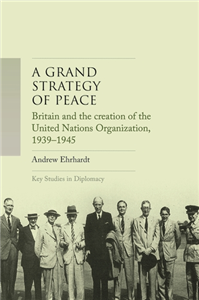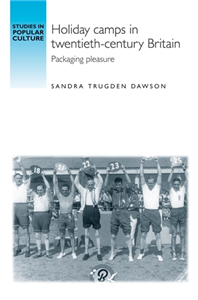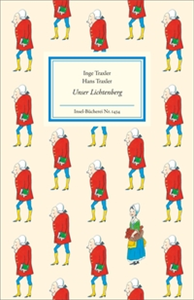Your Search Results
-
Promoted Content1990
Ehe ohne Trauschein
Ein Rechtsratgeber. (zu zweit)
by Ihara, Toni; Warner, Ralph; Dzierma, Hans M
-
Promoted Content
-
 Trusted Partner
Humanities & Social SciencesApril 2023
Trusted Partner
Humanities & Social SciencesApril 2023Who governs Britain?
Trade unions, the Conservative Party and the failure of the Industrial Relations Act 1971
by Sam Warner
Providing fresh insights from the archival record, Who governs Britain? revisits the 1970-74 Conservative government to explain why the Party tried - and failed - to reform the system of industrial relations. Designed to tackle Britain's strike problem and perceived disorder in collective bargaining, the Industrial Relations Act 1971 established a formal legal framework to counteract trade union power. As the state attempted to disengage from and 'depoliticise' collective bargaining practices, trade union leaders and employers were instructed to discipline industry. In just three-and-a-half years, the Act contributed to a crisis of the British state as industrial unrest engulfed industry and risked undermining the rule of law. Warner explores the power dynamics, strategic errors and industrial battles that destroyed this attempt to tame trade unions and ultimately brought down a government, and that shape Conservative attitudes towards trade unions to this day.
-
 Trusted Partner
Literature & Literary StudiesOctober 1994
Trusted Partner
Literature & Literary StudiesOctober 1994Yerma
by Federico Garcia Lorca, Rebecca Warner
The second of Lorca's trilogy of rural dramas, Yerma, is a blend of contrasting moods through which Lorca charts the increasingly destructive obsession of a childless young country wife, and probes the darker zones of human fears and desires. The play's rich mode of expression - a combination of verbal, visual and auditory images and rhythms - is also geared to celebrating sexual attraction and fertility, creation and procreation. Through his characterization of the play's central figure, Lorca raises the question of women's social status - a controversial question both then and now, and one to which Robin Warner pays particular attention in his critical introduction to the play. He also examines the links between the dramatic structure of Yerma and the importance of cultural politics during the course of the Second Spanish Republic. The Spanish text is supported by an introduction and notes in English, as well as by an extensive vocabulary and section of discussion questions. ;
-
 Trusted Partner
Trusted Partner
-
 Trusted Partner
The ArtsSeptember 2012
Trusted Partner
The ArtsSeptember 2012Tony Richardson
by Robert Shail, Brian McFarlane, Neil Sinyard
Tony Richardson was a key figure in British cinema of the 1950s and 1960s. Having established himself in the theatre with the first production of John Osborne's landmark play Look Back in Anger, he became a central director in the New Wave, bringing greater realism to British cinema. He went on to make some of the most significant films of the 1960s including the multi Oscar-winning Tom Jones. This detailed and authoritative account of Richardson's career provides a reassessment of his achievements. As well as looking at his best known films, it considers neglected works such as Ned Kelly and Joseph Andrews, illustrating how Richardson remained a champion of the socially marginalised. In mapping out his life and work, from the English Stage Company to his final films in America, Shail re-establishes Richardson's at the front rank of British film directors, confirming his contribution to a period of dynamic change in British culture. ;
-
 Trusted Partner
Humanities & Social SciencesJuly 2025
Trusted Partner
Humanities & Social SciencesJuly 2025A grand strategy of peace
Britain and the creation of the United Nations Organization, 1939-1945
by Andrew Ehrhardt
A grand strategy of peace is the first detailed account of Britain's role in the creation of the United Nations Organization during the Second World War. As a work of traditional diplomatic history that brings in elements of intellectual history, the book describes how British officials, diplomats, politicians, and writers - previously seen to be secondary actors to the United States in this period - thought about, planned for, and helped to establish a future international order. While in the present day, many scholars and analysts have returned to the origins of the post- 1945 international system, this book offers an exhaustive account of how the statesmen and more importantly, the officials working below the statesmen, actually conceived of and worked to establish a post-war world order.
-
 Trusted Partner
Humanities & Social SciencesFebruary 2011
Trusted Partner
Humanities & Social SciencesFebruary 2011Holiday camps in twentieth-century Britain
Packaging pleasure
by Sandra Trudgen Dawson, Jeffrey Richards
This book is the story of two holiday camp chains established in the 1930s that provided thousands with packaged pleasure. Warner and Butlin's commercial camps emerged at the intersection of cultural shifts that politicised working-class leisure and consumption. Entertainment fostered in the post-war camps provided a forum for popular pleasure that reinforced the idea of a 'national' culture grown from the common experience of war. Butlin and Warner, the big commercial chains of the 50s and 60s, are enmeshed in our social and cultural history. Dawson uncovers the significance of the holiday camps to the political, economic, social, and cultural history of twentieth-century Britain, drawing on an impressive variety of sources, from government documents to trade journals, advertising, photographs, oral histories, literature, films and songs. This unique volume will be of interest to academics and specialists of British social history, popular culture and tourism studies whilst remaining accessible to enthusiasts. ;
-
 Trusted Partner
Humanities & Social SciencesApril 2003
Trusted Partner
Humanities & Social SciencesApril 2003Step-daughters of England
British Women Modernists and the National Imaginary
by Jane Garrity
Jane Garrity shows how four British women modernists - Dorothy Richardson, Sylvia Townsend Warner, Mary Butts and Virginia Woolf - used experimental literary techniques in order to situate themselves as national subjects. Reading literary texts through the lens of material culture, this book makes a major contribution to the new modernist studies by arguing that women's imaginative work is inseparable from their ambivalent and complicated relation to Britain's imperial history. Drawing on extensive archival research, Garrity takes as her point of departure the ubiquitous maternal and racial link to national identification during the interwar period. Each chapter foregrounds a different range of cultural developments that coincided with the rise of modernism, such as emerging visual techniques, the revival of British neo-medievalism, ethnographic work on primitive mysticism, and nostalgia for English ruralism. By locating both canonical and non-canonical works of female literary modernism within broader cultural discourses, Garrity demonstrates the intersections among nationalism, imperialism, gender and sexuality in the construction of English national culture.
-
 Trusted Partner
Literature & Literary StudiesJanuary 2013
Trusted Partner
Literature & Literary StudiesJanuary 2013Ottonian Germany
The Chronicon of Thietmar of Merseburg
by David Warner
The Chronicon of Thietmar of Merseburg has long been recognised as one of the most important sources for the history of the tenth and early eleventh centuries, especially for the history of the Ottonian Empire. Thietmar's testimony also has special value because of his geographical location, in eastern Saxony, on the boundary between German and Slavic cultures. He is arguably the single most important witness to the early history of Poland, and his detailed descriptions of Slavic folklore are the earliest on record. This is a very important source in the medieval period, translated here in its entirety for the first time. It relates to an area of medieval studies generally dominated by German scholars, in which Anglo-phone scholars are beginning to make a substantial contribution.
-
 Trusted Partner
Trusted Partner
-
 Trusted Partner
Trusted Partner
-
 Trusted Partner
Trusted Partner
-
 Trusted Partner
January 1990
Trusted Partner
January 1990Das hoffnungslose Leben der Anna M.
Bericht über eine Schizophrenie. (Persönliche Erfahrungen mit Krisen)
by Schulz, Bernd J
-
 Trusted Partner
Trusted Partner
-
 Trusted Partner
Trusted Partner
-
 Trusted Partner
Literature & Literary StudiesJuly 1998
Trusted Partner
Literature & Literary StudiesJuly 1998Toni Morrison
by Jill Matus, John Thieme
An illuminating study of one of the best-selling, most widely studied black authors today. Explains Morrison's relation to the American civil rights and Black Consciousness movements. Places Morrison in a political and historical context . ;
-
 Trusted Partner
Trusted Partner
-
 Trusted Partner
March 2017
Trusted Partner
March 2017Unser Lichtenberg
by Inge Traxler, Hans Traxler
Georg Christoph Lichtenberg spottet und rühmt, mahnt und klagt, liebt und genießt, glaubt und zweifelt, empört und begeistert sich. Nichts und niemand ist ihm zu groß oder zu gering. Der Mann, der seinen Pantoffeln und einem Ofen Namen gibt, verkehrt und korrespondiert mit den Großen seiner Zeit. Er hat sich nichts vormachen lassen und war seiner Zeit weit voraus. In seinen Sudelbüchern, Briefen und Tagebuchnotizen hat er uns geistreiche und ironische Aphorismen für alle Lebenslagen hinterlassen. Die schönsten und prägnantesten Gedanken hat Inge Traxler für diesen Band ausgewählt. Hans Traxler hat sie auf seine Weise interpretiert.
-
 Trusted Partner
Trusted Partner


























